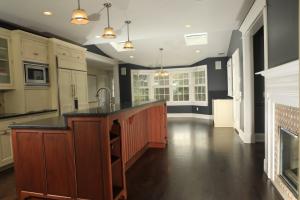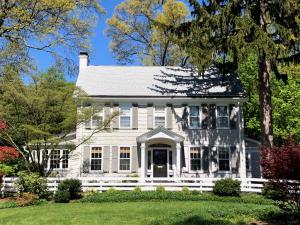— George Michalis
MONTCLAIR, NEW JERSEY, USA, April 14, 2022 /EINPresswire.com/ — The use of the right painting materials and tools is more than half the success of any work construction to be done at home. In most cases, only professionals can understand the colors to achieve the desired result.
At the same time, of course, it is not necessary to know everything about every type of paint that is on the shelves of paint shops, since a basic knowledge of the categories of paints and their specifications is enough to facilitate and not bother homeowners for any work or construction, they want to attempt.
In principle, “suitable” means a color that will stand the test of time on any surface. For example, with paint for walls, one can paint anything wooden or glass, and with paint for wood/metal one can paint a wall but of course, the paint, even if it “stands” for a moment, with the first touch contact with water will wear out and the paint will be damaged.
So, depending on the type of surface one wants to paint in the house they should use the appropriate color.
The subcategories are endless depending on whether they are interior or exterior painting, hypoallergenic or not, with special resistance to cleaning, moisture, etc. However, in general, any acrylic/plastic paint is suitable for any wall surface.
Most chalk paint companies have the corresponding colors in wall paint, which creates a very matte and beautiful result. Unlike the use of chalk paint on other surfaces, the chalk paint for walls does not need to be “sealed” with wax or varnish and is used just like conventional acrylic/plastic.
For concrete planters, curbs, etc. On any type of concrete surface, one can use acrylic/plastic for walls, but it will not have the same strength. Especially in exterior painting and on surfaces completely exposed to sun, water, etc. the paint will “burst” much earlier than normal cement paint.
Chalk paints for painting furniture objects and mainly to give an object-aged artificial look. For any type of wood surface, furniture, etc., and available in many types depending on the final desired texture of the paint whether it concerns paint, varnish, or spray (glossy – matte – satin, etc.).
“Water varnish” or “watercolor” indicates the dilution product. These water products that do not require the use of solvent are usually somewhat more expensive but much more practical.
There is no special paint for plastic surfaces/objects that is durable and for amateur use. However, most spray paints “stand” on plastic surfaces/objects, while acrylic is completely unsuitable for walls that will peel on any plastic if not the one that will dry, very quickly.
This basic categorization depending on the material of each surface in combination with the durability of the paint makes it obvious that there are cases that for homeowners’ convenience but also the economy, both in small painting repairs in the house and constructions, can be used on surfaces/objects of different types from the ones that are suitable for each material, but only when it comes to surfaces/objects that will not be strained from use, frequent washing – rubbing, etc.
For example, any glass requires a special color for glass. But to paint interior bottles or jars for decorative use, it is not necessary to spend… a liter of special paint, you can do it with simple acrylic paint for walls. What is required here is simply the coloring of the object, it does not care about the durability of the result over time and it is a surface that will not be strained by anything.
Another similar example. By painting the walls of a room, if wanted to freshen up the perimeter wooden slats of an old fitted wooden wardrobe painted in the same color with the acrylic/plastic that are currently painting the walls with and not necessarily with wood color, as this is a surface that is also not going to be strained and the paint will last without any problems.
The same is true for painting plywood or wood shelves that are going to be used as interior partitions/shelves in a closet or for example to change the color from brown to white on a very small surface from some simple wooden frames.
Whether done with wood color or acrylic for walls, the result will be the same, even if needed to be applied a coat of paint more. Simply acrylic is more economical and at the same time what is usually available in homes mainly in white shade.
Even with a stencil on a piece of fabric one can paint with simple acrylic paint if it is for example a fabric that is wanted to be used as a frame and for decorative purposes only without ever washing it.
In general, white acrylic / plastic paint for walls is “Passepartout” so even if not intended to be used immediately and somewhere specific, buy it and have it at home. Mixed with paints in a syringe or simple acrylic paints, will give as much as needed each time, in any shade and it will serve well in any type of construction or small painting repairs, even on wood, metal, clay, or paper. However, it is not going to be lost in any case and if it is well closed, it remains unchanged for years.
Of course, the most perfect result in texture in painting, for example, decoupage on wood, will be given by framing the paper pattern by painting with colors specific to this use, of course. The difference concerning using in all these types of constructions simple painting colors (water or oil) that are found in sets of basic colors or individual tubes at very low prices, the eye of a professional painter… he will certainly see it and understand it.
One of the most common things that happen to homeowners when dealing with the construction that requires colors or to paint small areas in the house, is that while they have a large number of different colors that are leftover from previous tasks, the shades are not what they want.
Then the… temptation to mix a little dark blue that has been left over since… they painted the railings with a little white acrylic for walls to make the flowerpot… blue, is admittedly big. But if the color for the railing is worked with solvent-turpentine while the acrylic with water, greater the temptation will prove to be a surprise. Mixing colors require colors of the same texture, and always hire professional painters for painting the house.
Only paints of the same composition that are diluted with the same material can be mixed. Acrylic with acrylic, etc. Even the same kind/texture paints if one is glossy and the other matte, will never mix well and will not give the right paint.
And for this reason, watercolors are more practical although more expensive. Some say they are completely satisfied with a particular product, others not at all, some with just one coat of paint achieve the desired result while others complain that 2-3 coats were required, etc.
In most such cases, to identical or of the same quality category of paints, it is not the color itself that is to blame, but the surface on which it is applied.
Most paints, in addition to the general specifications of the products, contain clear instructions for the preparation of the surface to be painted. It is a very crucial point, which amateurs usually pass as “insignificant” and the result is that the color is to blame.
To use the right paint for wood or metal on any corresponding surface is not enough if the specific surface is not completely clean if it has not been sanded before so that it “roughens” or is completely sanded, depending on the type and whether it was painted or not, whether or not it has been applied with a substrate/primer in cases where it is necessary, etc.
In general, it is preferred by Montclair painters to do the basic painting work in a house and any type of construction using, depending on each material, “ordinary” simple colors when there is no real need to resort to a highly specialized product, but in any case, painters must follow the basic instructions for use of each product.
George Michalis
Gikas Painting
+1 973-835-7775
info@gikaspainting.com
Visit us on social media:
Facebook
Twitter
Other
Gikas: Best Painting Company In Essex County – Montclair Painting & Roofing Contractor
![]()




 ,
,